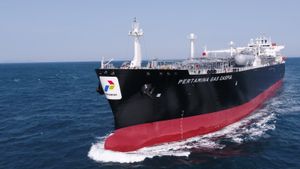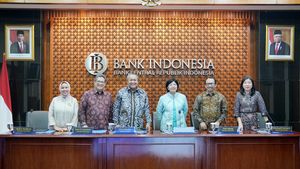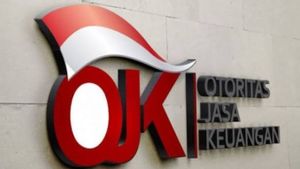JAKARTA - Differences between CV and PT are generally very important to know before starting a business entity. Because these two business entities have striking and significant differences.
The difference between PT and CV will usually be used as consideration when starting a business. So that you can distinguish it, here we explain the explanation.
CV is a form of business entity whose establishment is carried out by 2 people or more. This business entity has two types of members, namely active and passive.
Active members will be actively involved in the management of a company. In addition, it also has an unlimited responsibility for the debt of a company.
Meanwhile, passive members will contribute in the form of capital but are not involved in company management activities.
PT is a form of business entity that is considered more complex when compared to CV. In its establishment it can be done by one person or more.
Regarding the basic capital of PT, this will be determined in the deed of establishment and must be deposited by adjusting the percentage of share ownership of each of its founders. The capital will later become part of the company's assets.
In general, the difference between CV and PT lies in the responsibility, structure, and company regulations. But not only that, there are differences in CV and other PT that you can know about, namely:
1. Form the Company
CV is a business entity with a simpler form of the company. In CV, it is also easier in the process of its establishment. In fact, this business entity is also more flexible because its members will be directly involved in its daily operations.
Meanwhile, PT is a business entity with a more complex company. So, this PT business entity will have a more detailed and detailed organizational structure. For the structure, this business entity has a formal structure with the existence of a board of commissioners and directors.
2. Capital
CV does not have the requirements set by law regarding its basic capital. This means that there is no limit on the amount of capital that must be deposited by shareholders.
Meanwhile, PT is the opposite of CV regarding its capital stipulation. In the business entity PT has a requirement for the amount of capital that must be met. So, the amount of the basic capital of PT must be deposited by the founder of PT and adjusted to the percentage of ownership.
3. Founder
CV was founded by 2 people or more (allied). Each of these allies will have the same status regarding company ownership. In addition, its allies will also have an unlimited responsibility for the company.
Meanwhile, PT can be established only 1 person or more. The owner of PT or its shareholders has limited responsibility to his own company.
In this Limited Company, shareholders or founders of the company are not responsible for the company's debt or obligations. However, they will be responsible for the amount of capital deposited.
4. Company name
The difference between CV and PT is then related to the company name. In CV there are no special requirements regarding the name selection to be used in the company. So that the founders can choose and determine the name of the company without certain restrictions.
Meanwhile, PT has requirements regarding the choice of the company's name. So the name selection for PT must be unique and the name should not be the same as other companies.
In fact, before the name PT can be officially used, the registration and name check process must be carried out. The process will be carried out in related agencies, such as BKPM and the Ministry of Law and Human Rights.
5. Procedures for establishment
The procedure for establishing a CV will be established more simply and the process is not complicated. When setting up a CV can be done through an agreement between allies. The agreement is in the form of a written agreement containing several things, such as profit and loss to rights and obligations.
Meanwhile, the procedure for establishing PT must go through a more complex stage. The process begins with submitting the deed of establishment to the notary. After that, PT must issue the company's AD, register the company, and obtain SIU from the Ministry of Law and Human Rights.
6. Management
The CV business entity does not have a board of directors, which means that all company management will be carried out by allies. So the ally will be directly involved in the daily operational activities of a company.
Meanwhile, PT has a more formal organizational structure compared to the structure owned by CV. At PT, the Board of Directors will be responsible for the daily management operations of a company.
The Board of Directors will also make more strategic decisions, carry out company management activities, and represent companies in transaction activities.
On the other hand, the Board of Commissioners will provide supervision and direction addressed to the Board of Directors and be responsible for existing policies in a company it manages.
The difference between CV and PT which is quite striking and significant above, of course, you must understand before establishing a business entity. However, in order to make the process easier, you can use the services of the establishment of a trusted CV and PT.
After knowing about the understanding and differences between CV and PT, there are advantages and disadvantages that must be known. The advantages and disadvantages of CV and PT include:
1. Excess and Lack of CV
Excessive
Here's the Flexibility of Management Settings: This business entity provides flexibility in managing the structure of the company's management.asis Information Disclosure: This advantage will make it easier in terms of communication and cooperation with external parties.men's Speed of Establishment: Very profitable for those who want to start a business in a short time.men's Tax Benefits: Having tax rates tends to be lower than PT's business entity.
Lacks
Terbitung Tanggung Terbatas Terbatas: Pemilik CV bertanggung jawab atas utang perusahaan dan memiliki risiko kehilangan aset milik pribadi.menung Akses ke Modal Terbatas: CV tidak bisa menjual sahamnya ke publik dan sumber modalnya juga terbatas.
2. Excess and Lack of PT
Excessive
Limited Responsibility: Owners will only be responsible for the amount of paid-up capital and more protected personal assets. Access to Capital is Easier: With a split share ownership system, this business entity is able to sell its shares to the public or other investors. endows Reputation and Professionalism: This business entity has been regulated by a strict law, thus showing that PT has a high level of professionalism and reputation.
Lacks
Reviewing the Cost of Establishment & Bureaucratics: The establishment of a business entity of PT requires high costs and involves a more complicated bureaucratic process. Restricted Management Arrangements: The business decisions taken by PT must go through the approval of the board of directors and the GMS. This of course will limit the flexibility of PT's business entities in making decisions.
The explanation above will greatly help you to know the differences between CV and PT, starting from the shortcomings and advantages. By knowing this explanation, you can also choose the right business entity and according to your needs.
The English, Chinese, Japanese, Arabic, and French versions are automatically generated by the AI. So there may still be inaccuracies in translating, please always see Indonesian as our main language. (system supported by DigitalSiber.id)













